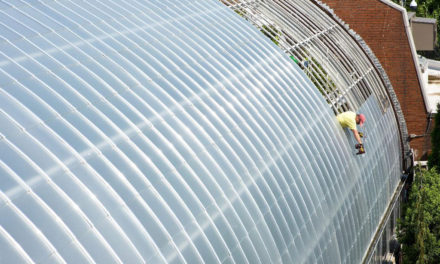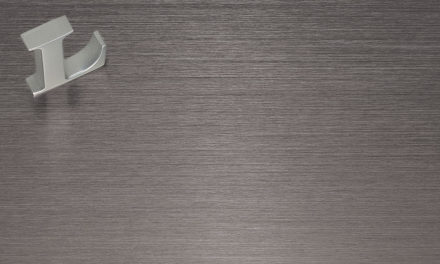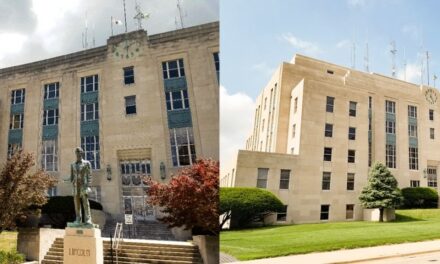The nature of development in the urban realm is changing from buildings that are predominantly single-purpose structures into multi-use destinations and connected communities—and 400 Fairview embodies this change. At thirteen stories and 337,000-square-feet, this mixed-use building was conceived as a catalyst for urban engagement. Designed to knit into its neighborhood and foster a sense of community and connection, the building resets development expectations for commercial design in terms of public/private engagement and functional design.
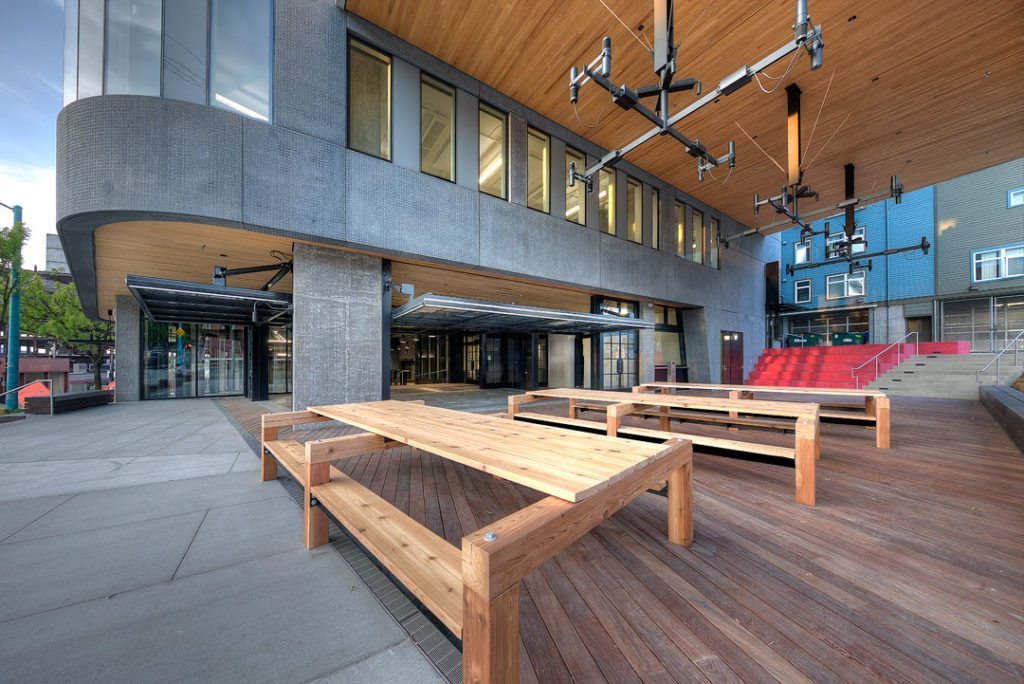
Photo: Magda Biernat
Programmatically, the building is divided into two components. The podium is a richly-toned and textured, sinuously-curving three-story element notable for its porous ground plane that merges its prominent market hall with outdoor spaces to create a hub of activity. A contrasting, narrow, ten-story office tower featuring dynamically patterned windows rises above the podium. The tower is hinged slightly at mid-block to enhance views. Both podium and tower are formed with integrally-colored precast concrete panels; a sandblasted pattern of circles at street level, and a smooth texture for the tower. The solution to resetting the typical language of commercial development is achieved through an open, engaging and informal approach to architectural expression that is present throughout the building—from plan to massing, and materiality.
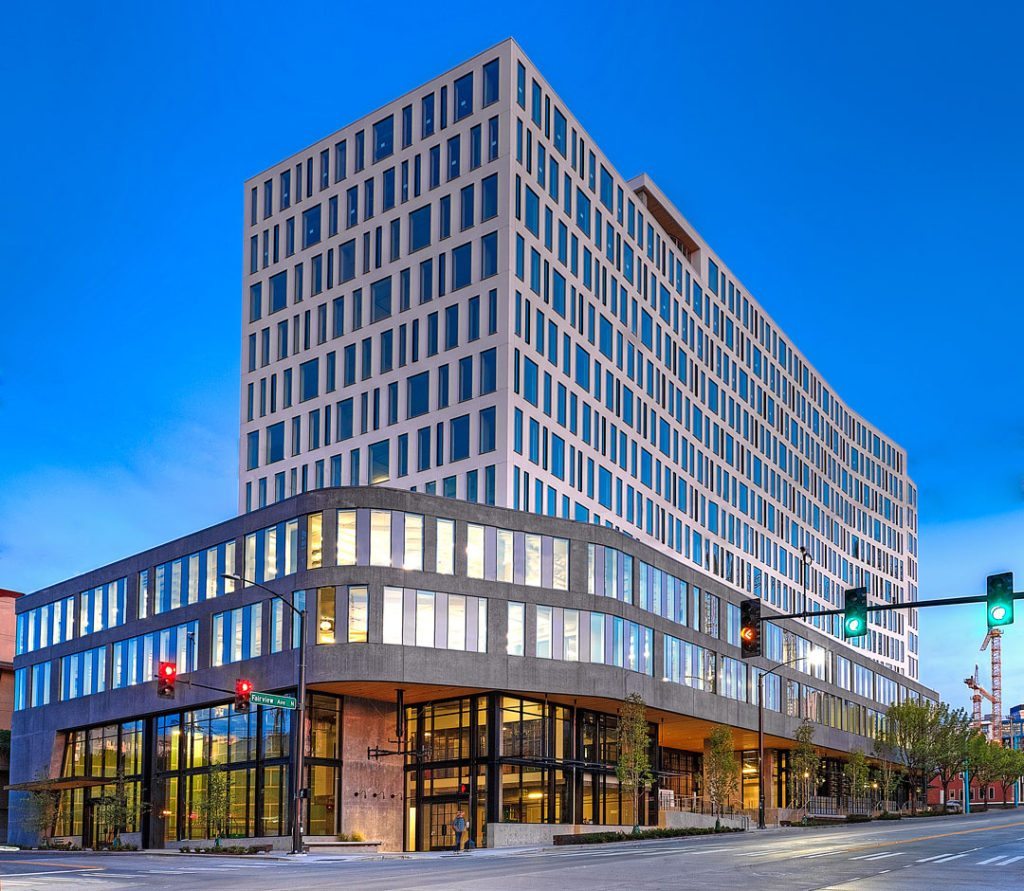
Photo: Magda Biernat
Everything about the street-level experience is designed to increase the sense of invitation and engagement with its surroundings: large and frequent entries on all sides of the building, including the alley, improve movement throughout the site; the creation of a market hall that runs the length of the block to merge retail, office workers and passersby; a rich palette of materials that spills into sheltered exterior spaces, including a plaza and large-scale stoops; and the curation of local retail to create a rich and varied experience that brings life to the building from morning until night. Natural light floods into the market hall from three large, fully-glazed monitors, which also open to podium-level offices and afford views across floors. The building’s top floor accommodates a rooftop restaurant and deck that is open to the public—a rare opportunity for the community to enjoy views of the city and Lake Union.
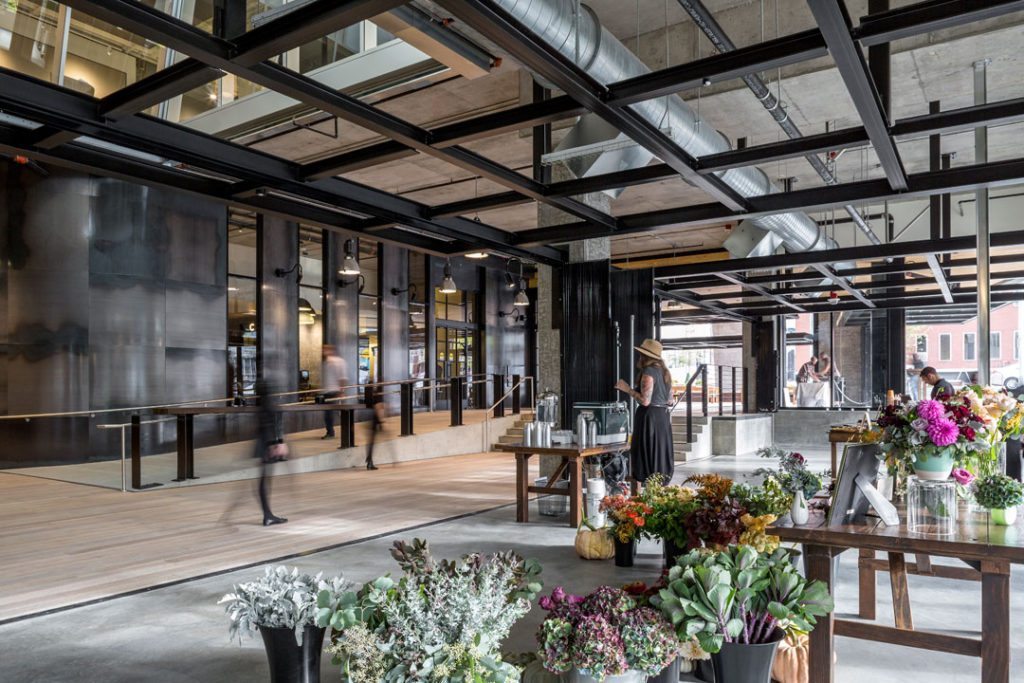
Photo: Magda Biernat
The patterning of the tower fenestration was inspired by the rustic weave found in natural fabrics, such as linen, flax or silk—irregularities that contribute to its relaxed, natural feel. Rather than employ ribbon windows found on so many office buildings, glazing is composed of five distinct modules. A system of ten-foot-wide window and precast panel modules are offset and rotated horizontally and vertically to create the varied window layout. White or black window frames create an additional layer of visual texture, which is revealed as one approaches the building. An additional benefit of the atypical window module is that it translates into a wide variety of room sizes, providing more flexibility for tenants. Inside, the unique “side-core” design moves the elevator and service functions from the middle of the floor plate to the edge, thereby increasing the efficiency and flexibility of the large floor plates. The building is LEED Platinum certified.
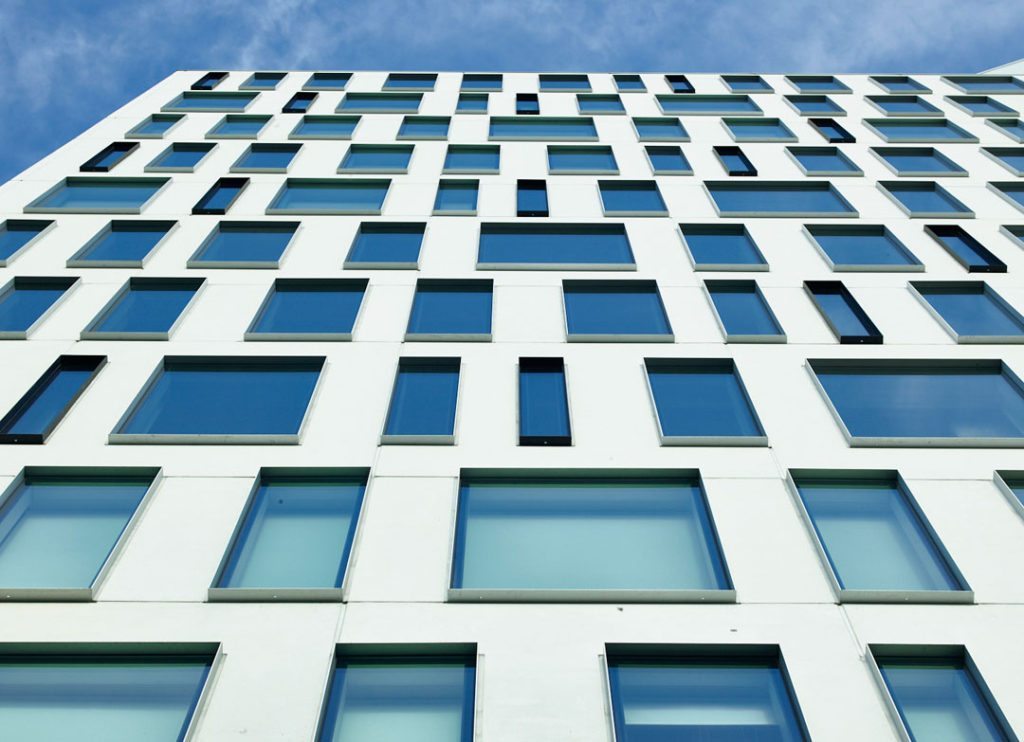
Photo: Spencer Lowell
Project team
Design architect: SkB Architects
Architect of record: Kendall/Heaton Associates
Structural engineer: Magnusson Klemencic Associates
Landscape architect: Swift Co.
Developer: Skanska USA Commercial Development
Owners: TIAA-CREF, Skanska
General contractor: Skanska USA
Acoustical consultant: Shen Milsom & Wilke
Mechanical, plumbing: WSP
Geotechnical engineer: PanGeo
Photographers: Spencer Lowell, Magda Biernat, Hannah Rankin
Building information/Materials
Location: 400 Fairview Avenue North, Seattle, Washington
Total floor area: 337,000-square-feet
Stories: 13 stories
Structure: post-tensioned concrete
Finish: Podium (aluminum curtain wall, integrally-colored and sand-blasted precast concrete panels, wood); Tower (integrally-colored precast concrete panels, aluminum curtain wall framed windows)
Precast panel fabricator: Architectural Precast Structures, LTD
Metal panels: Morin
Glazing: Arcadia
Storefront windows and doors: Portella
Tile in plaza: Villa Lagoon Tile 8 x 8 x 1/2 hexagonal cement tiles and Concrete Collaborative Solana tiles
Custom pivot doors: Local Fabricator: KB Architectural Services
Wood floor: Salisbury circle engineered wood flooring:
– Tongue and groove white oak rift and quartered circle sawn engineered wood
– 5/8″ thick, 6″ wide, and lengths ranging from 5ft to 10ft
– Planks prefinished with European Hardwax
Custom clock: Americlock, Inc.
Light monitor fans: Big Ass Fan
Elevator lobby tile: Stonesource Mutina BAS Relief Cloud Nero and Phenomenon Honeycomb B
Bathroom tile: Dal-tile Rittenhouse Square
Garage elevator tile: McNear Thin Brick Tile


